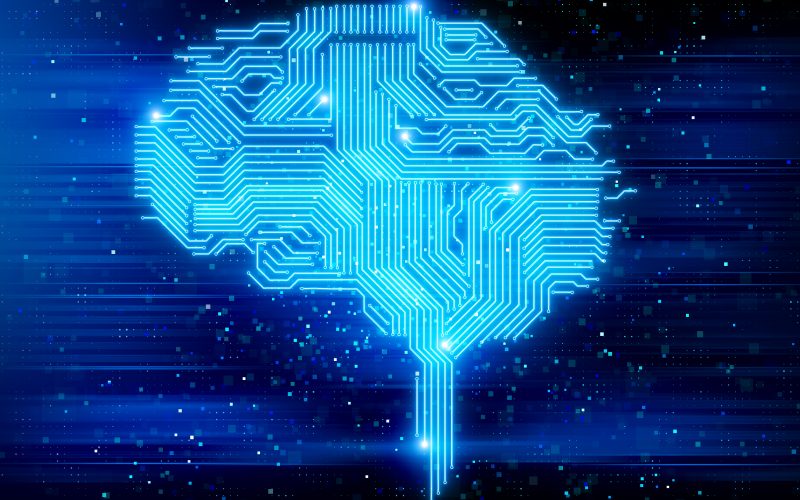The Artificial Intelligence (AI) genie is not going back into the bottle; leaving the world to contemplate how best to manage this most potent, yet controversial, tool. The water sector’s response has many parallels with reactions to AI more broadly: we are certain AI has benefits, are less sure about how to realise them, and wary of unintended consequences.
Water utilities have large, diffuse, physical asset bases. Advances in sensor, monitoring, data processing and communications technologies means we gather ever more asset data – at an ever increasing speed.
AI and machine learning technologies offer the ability to process and utilise vast amounts of data; allowing utilities to move beyond the descriptive analytics in use currently – which use data to understand past incidents and trends. AI can help develop and enhance predictive analytics, which establishes what is likely to happen, and move towards prescriptive analytics, which suggests actions on the basis of the predictions.
As water utilities face a perfect storm of increasing demand, falling revenues and climate change; enhancing the performance of existing assets in this way offers significant benefits. Especially at a time when Ofwat is starting to think in terms of asset systems, especially in relation to sustainability, resilience and reliability.
Ultimately, in addition to suggesting actions, AI has the ability to implement those actions autonomously; and to continually refine and amend the way it responds to the need to act. And this aspect of AI causes anxiety.
The water industry is conservative, that’s why it’s popular with investors seeking long-term, stable returns. In part it is conservative because the consequences of mistakes can be serious. The environment can damaged; and people’s health – and potentially lives – can be jeopardised by failures in water and wastewater treatment. Risk has to be very carefully managed; so the idea of handing over decision making to computers makes some people uncomfortable.
Another thing that makes people uncomfortable about AI is a perceived risk to jobs. The Office for National Statistics reported, in March 2019, that circa 1.5 million jobs in England are at high risk of some of their duties and tasks being automated; with automation defined as replacing tasks currently done by workers with technology, which could include computer programs, algorithms, or robots.
The UK water industry, while not immune from this, faces a paradox: it’s estimated currently that the sector will need to fill 221,000 roles in the next nine years. And AI doesn’t happen by itself, AI needs people. Effective AI and machine learning is founded not just on data but on the deep institutional knowledge of people who understand the water and wastewater assets that AI will support.
So the potential is for changing rather than losing roles. Scottish Water, for example, does not envisage any redundancies as a result of its digital strategy. The company recognises that its data is incomplete with the ‘corporate memory’ of its staff.
AI relies on data, but without the insights of the people who are intimate with how assets have been designed, built and behave – and what the assets need to do and not do – the data is meaningless; and the AI unfit for purpose. Expertise from a variety disciplines across the utility will be necessary to provide the insights into the data patterns and teach the AI how to recognise failures and what optimum performance looks like.
We need to think of the AI as another component of the water industry workforce. It has the ability to learn, but it needs to be taught; and then the AI needs to gain experience while operating under close supervision from those who know the assets well.
The result will be a blended workforce of artificial and human intelligence – Engineer 2.0. The need for asset experts to be closely involved in the planning, implementation, training and operation of the AI will help the experts develop trust in the system.
The process will take time. A significant amount of clean data is required to determine what optimum performance looks like, and before anomalies can be detected with sufficient confidence to give AI control. Most water utilities do not yet have have data in sufficient quantity and quality to reach this point. While it may exist in pockets, there is much still to do to in terms of data collection and organisation, to support an effective enterprise level AI system.
One estimate is that around five years’ worth – one AMP – of new data will be required for an enterprise level AI system to reach its full potential. This sort of time scale will help foster the level of cultural change required in the water utility to garner the requisite trust in the AI’s ability to perform effectively and safely.
And trust in AI is key as if we are ultimately to relinquish elements of control. Without trust this will not happen. Creating the right level of trust requires explainability. If a decision can be explained it is more likely to be trusted. So we need to understand why the AI decides what is does, the system’s ‘thinking’ has to be transparent and readily understood. And this is our current challenge.
The supercharged pace of technological change means that it may take less than five years to gather the requisite levels of suitable data and imbed a successful, enterprise-wide water utility AI system. What is certain, however, is that there is no going back. AI is with us now and Engineer 2.0 is becoming a reality – to paraphrase Victor Hugo, “Nothing is stronger than an idea whose time has come.”
Article by Mark Kaney, Director of Asset Management, Black & Veatch; originally published by The Water Report
